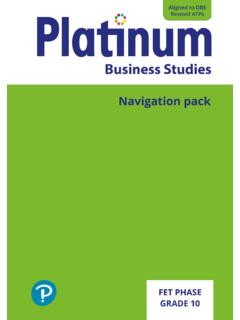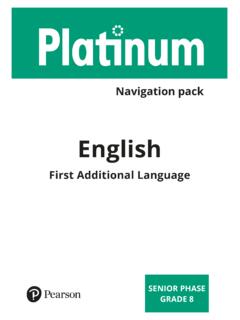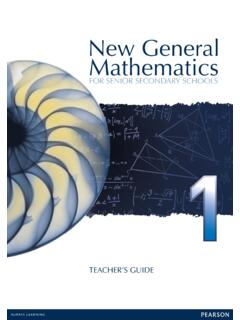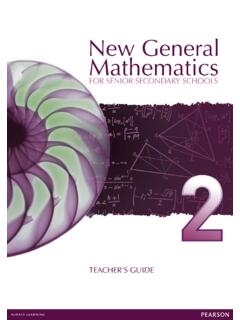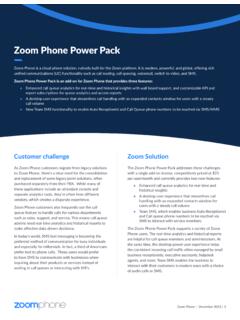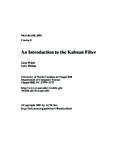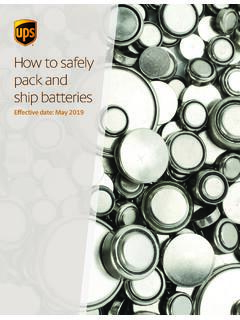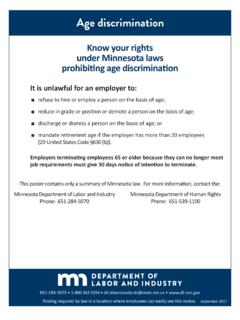Transcription of Platinum Social Sciences Navigation Pack Grade 9
1 Aligned to DBE Revised ATPs Social Sciences Navigation pack SENIOR PHASE Grade 9 Social Sciences Grade 9 Navigation PackSENIOR PHASEGRADE 9 Pearson South Africa (Pty) Ltd4th floor, Auto Atlantic Building, Corner of Hertzog Boulevard and Heerengracht, Cape Town, 8001 Offices in Johannesburg, Durban, East London, Polokwane, Bloemfontein, Rustenburg and Mbombela. Pearson South Africa (Pty) Ltd. 2021 All Rights Reserved. This digital publication is protected by copyright, and permission should be obtained from the publisher prior to any prohibited reproduction, storage in a retrieval system, or transmission in any form or by any means, electronic, mechanical, photocopying, recording, or otherwise except as authorised for use under the product subscription through which this digital application is accessed. To request permission to reproduce or adapt any part of this publication, please visit effort has been made to trace the copyright holders of material produced in this title.
2 We would like to apologise for any infringement of copyright so caused, and copyright holders are requested to contact the publishers in order to rectify the matter. Navigation PackPrint ISBN: 9781485720447 Print GUID: 5515B8AE-2 CEE-429D-80E6-7C89D50D8F66 EPDF ISBN: 9781485720409 EPDF GUID: C10E48FA-F4D9-4A7F-945C-7E74 BCAE5C10 Cover design by Pearson Media HubTypesetting by The Icon AgencyContentsDear Teacher ..3 Covid 19 Safety Guidelines ..6 How to Use ..8 Navigation Guide ..9 Term 1 ..11 Term 2 ..13 Term 3 ..15 Term 4 ..18 Targeted Worksheets ..19 Targeted Worksheet 1 ..22 Targeted Worksheet 2 ..25 Targeted Worksheet 3 ..28 Targeted Worksheets Answers ..30 Exemplar Assessment ..34 Geography Term 2 Control Test .. 35 History Term 2 Control Test .. 38 Geography Term 3 Control Test .. 40 Geography Term 4 Control Test .. 42 History Term 4 Control Test .. 47 Exemplar Assessment Answers ..494 Pearson Navigation Pack45 Introduction5 Dear TeacherThe National State of Disaster due to the COVID-19 pandemic has resulted in the disruption of Education in South Africa and the loss of valuable teaching time and disruption of the school a result of this, the DBE has created and released revised Annual Teaching Plans (ATPs) to assist schools and teachers in ensuring the 2021 school year is completed.
3 The 2021 ATPs are based on the revised ATPs that were developed in 2020. It is important to note that fundamental and core topics are retained in the 2021 ATPs. Some of the strategies that have been used in the process of developing the 2021 DBE ATPs are: reduction of content covered in certain topics merging of topics deleting topics revising the assessment guidelines reduction in teaching time for certain topics resequencing of Pearson South Africa, we believe that education is the key to every individuals success. To ensure that despite the challenges, teachers and learners can meet all the necessary learning outcomes for the year, we have created the Navigation Guide, a free resource to support teachers and learners during this challenging time. The Navigation pack aims to summarise and highlight the changes in the 2021 DBE ATP and provide teachers and learners with worksheets that focus on impacted topics in the curriculum. Due to resequencing of topics, the order of topics in the textbook that is currently used in the classroom may not be aligned to the new sequence of topics in the ATP.
4 Pearson has included page numbers from one of our tried and tested series, Platinum , to guide the teacher and learners as they navigate through the textbook, with the 2021 ATP. The Navigation pack has a set of assessments based on the Section 4 changes and the revised assessment guidelines. 6 Pearson Navigation Pack6 COVID-19 safety guidelinesGatherings at schoolWhere schools are open for learning, it is up to management to take decisive action to ensure sites are not simultaneously used for other functions such as shelters or treatment units in order to reduce the Social distancing practices that may include: A staggered timetable, where teachers and learners do not arrive/leave at the same time for the beginning and end of the school day. Cancelling any community meetings/events such as assemblies, cake sales, market d y, tuckshop, after-care classes, matric dance, Eisteddfod and other events. Cancelling any extra-mural activities such as ballet classes, swimming lessons, sport games, music class and other events that create a crowd gathering.
5 Teaching and modeling creating space and avoiding unnecessary touching. Limiting movement and interaction between classes. Schools with an established feeding scheme plan are to ensure that hygiene and Social distancing is always implemented. Teachers and staff members assisting with food distribution are to wear masks, sanitise prior to issuing food items and learners are to stand 1,5m apart in the a mask at all Restrooms/toiletsHand washingWashing hands with soap and water or using alcohol-based hand sanitisers is one of the most important ways to help everybody stay healthy at school. Critical to this is preparing and maintaining handwashing stations with soap and water at the toilet and in each and learners should always wash their hands after: eating entering the classroom using the toilet blowing your nose or coughing touching tears, mucous, saliva, blood or Premises and classroom settingWhen schools open, classroom settings should be altered in order to promote hygiene, safety and Social classroom settings may include: Cleaning and disinfecting school buildings, classrooms and especially sanitation of facilities at least once a day, particularly surfaces that are touched by many people (railings, lunch tables, sports equipment, door and window handles, toys, teaching and learning tools, etc.)
6 Ensure the proper ventilation and fresh flow of air through classrooms. Providing learners with vital information about how to protect themselves by incorporating the importance of hygiene, handwashing and other measures of protecting themselves, into the lessons. Promoting best handwashing and hygiene practices and providing hygiene supplies. Prepare and maintain handwashing stations with soap and water, and if possible, place alcohol-based hand sanitisers in each classroom, at entrances and exits, and near lunchrooms and toilets. Ensure teachers and learners wear a mask at all distancing Space the learners out in the classroom (or outdoors) try to keep learners separated by a minimum of 1,5m. Create space for learner s desks to be at least 1,5m apart Learners are not to exceed 30 per class or 50% of original class size Do not let learners eat items that fall on the floor or chew on pencils or other objects Learners should not share cups, eating utensils, or food Avoid close contact, like shaking hands, hugging or kissing8 Pearson Navigation Pack83.
7 Social behaviourIt is extremely vital during a pandemic that focus is not only directed towards optimal physical health and hygiene but fi nding ways to facilitate mental health support. Treat everybody with respect and empathy no teasing about COVID-19. Encourage kindness towards each other and avoid any stereotyping when talking about the virus. Stay home if you have a temperature or are ill. Do not touch people who are ill, but be a mask at all to use this Navigation PackREVISED DBE ANNUAL TEACHING PLANNAVIGATION PLANT hemesTopicUnitTimeLinks to Platinum series and Pearson Navigation PackPage referenceWAVES, SOUND AND LIGHTE lectromagnetic radiation [9 hrs] *10 The nature of electromagnetic radiation2 hrs Platinum LBPlatinum TGPage 84 90 Page 46 48 The electromagnetic spectrum 3 hrs The electromagnetic radiation as particle Photon4 hrs Navigation pack : Targeted Worksheet 1 Page 15 Consolidation and revision[16 hrs]16 hrsHYDROSPHERE *11 ASSESSMENT End of year exam Navigation pack : Paper 1 Physics Page 45 End of year exam Navigation pack : Paper 2 Chemistry Page 56 TOTAL HOURS = 25*10 This topic has been moved from term 1 to term 4.
8 This topic is on pages 84 90 in the Platinum Learner s Book , and pages 46 48 in the Platinum Teacher s Guide.*11 The whole topic has been to an exemplar assessment in the Navigation pack , that was created with Section 4 and curriculum changes in to a targeted worksheet in the Navigation pack , that focus on impacted or challenging topics in the for the Term as per the revised ATPs and the Section 4 DBE Teaching Plan: Comprehensive summary of the CAPS topics according to the revised Plan: Link to the Platinum series, as well as additional resources in the Navigation provide any additional Guide10 Senior PhaseSocial Sciences Navigation GuideSocial SciencesGeographyTERMGRADE 7 Grade 8 Grade 91 Map skills: finding places of interest on a map and using a street map: Merged with other topicsMap skills: No amendmentsTopographic and orthophotomaps: No amendments2 Volcanoes, earthquakes, and floods. Case study on earthquakes and floods - why some communities are at higher risks than others: Merge into other topicsClimate regions: No amendmentsDevelopment issues: World map indicating the Human Development Index (HDI) and Differences in development around the world: Omitted3 Population growth and change: Focus on world population growthSettlement: No amendmentsSurface forces that shape the earth: Sea, moving ice, wind features of erosion and deposition: Omitted4 Natural resources and conservation in South Africa: Responsible use of water resources and disappearing wetlands: Merge into other topicsTransport and trade: No amendmentsResource use and sustainability: Over-fishing or over-graving, sustainable fishing or sustainable grazing, role of consumer: AmendedHistoryTERMGRADE 7 Grade 8 Grade 91 The kingdom of Mali and the city of Timbuktu: No amendmentsThe Industrial Revolution in Britain and southern Africa: No amendmentsThe causes and outbreak of WW2 (1919-1945).
9 WW2 in Pacific moved to Term 2 Weimar Republic, Sophi Scholl, White Rose movement, Dietrich Bonhoeffer, Confessing Church, Japan expansion and atrocities in China: Omitted2 The trans-Atlantic slave trade: Impact of the slave trade on West Africa, America, Britain: OmittedThe Mineral Revolution in South Africa: Parts of Gold mining on the Witwatersrand: OmittedThe Nuclear Age and The Cold War: Arms races and space race details: Omitted WW2 in Pacific: Included3 Colonisation of the Cape 17th to 18th centuries: No amendmentsThe scramble for Africa: Rise of Ashanti Kingdom: Omitted in the 2020 ATP but has been re-introduced in 2021 Turning points in modern South African history since 1948: Human evolution and common ancestry, racial segregation before apartheid, case study Bantustans: OmittedTerm 4 Sharpeville Massacre and Formation of PAC 1959: Included4Co-operation and conflict on the frontiers of the Cape Colony in the early 19th century: No amendmentsWWI (1914-1918): Re-introduced in the 2021 ATPT urning points in South African History (1960, 1976 and 1990): Sharpeville Massacre and Formation of PAC 1959: Moved to Term 3 End of Cold War: OmittedHelen Joseph or Lillian Ngoyi: Choose between these two11 Social Sciences Grade 9 Navigation GuideSocial Sciences Grade 9 Social Sciences Grade 9 Term 1 TEACHER Navigation GUIDET opicSub-topicUnit/Content specific conceptsTimeLinks to Platinum series and Pearson Navigation PackPage referenceGEOGRAPHY TOPIC 1: MAP SKILLSSub-topic 1: Contour lines Unit 1: The concept of contour lines (models and landscape maps with landscape features)1 hourPlatinum LBPlatinum TG 4 5 24 25 Unit 2: Steep and gentle slopes (description of gradient) 1 hourPlatinum LBPlatinum TG 6 25 Unit 3: River valleys and spurs 1 hourPlatinum LBPlatinum TG 7 26 Sub-topic 2: 1: 10 000 Orthophoto maps Unit 1: Vertical aerial photographs (Review Grade 8) 1 hour Platinum LBPlatinum TG 8 27 Unit 2.
10 Orthophoto images made from aerial photographs 1 hourPlatinum LBPlatinum TG 9 27 Unit 3: How height is shown on orthophoto maps1 hourPlatinum LBPlatinum TG 10 27 Unit 4: Contour lines on orthophoto maps identifying features1 hourPlatinum LBPlatinum TG 11 28 29 Sub-topic 3:1: 50 000 Topographic mapsUnit 1: Read map symbols to identify features1 hourPlatinum LBPlatinum TG 12 13 29 30 Unit 2: Height clues on topographic maps1 hourPlatinum LBPlatinum TG 14 15 30 Unit 3: Contour patterns showing river valleys, hills, mountains, ridges and spurs1 hourPlatinum LBPlatinum TG 16 17 30 31 Unit 4: Scale and measuring distance on topographic maps using line and ratio scales1 hourPlatinum LBPlatinum TG 18 31 Unit 5: Co-ordinates to locate features1 hourPlatinum LBPlatinum TG 19 32 Sub-topic 4:Information frommaps andphotographsUnit 1: Interpret information from topographic and orthophoto mapsand aerial photographs2 hoursPlatinum LBPlatinum TG 20 22 32 33 REVISION AND ASSESSMENT 80 MARKS Revision3 hoursPlatinum LBPlatinum TG 23 25 34 35 Term 1 Assessment TestMarks 50 Content:Map reading, analysis and interpretation 1 hour TOTAL HOURS = 1812 Social Sciences Grade 9 Navigation GuideSocial Sciences Grade 9 Term 1 TEACHER Navigation GUIDET opicSub-topicUnit/Content specific conceptsTimeLinks to Platinum series and Pearson Navigation PackPage referenceHISTORYTOPIC 1: WORLD WAR II (1919 1945)1 Sub-topic 1:The Rise of Nazi GermanyUnit 1: The defeat of Germany and the Treaty of Versailles 30 minPlatinum LBPlatinum TG 108 109 87 88 Unit 3: The Great Depression of 1929 and effects on Germany 1 hourPlatinum LBPlatinum TG 111 89 90 Unit 5.
